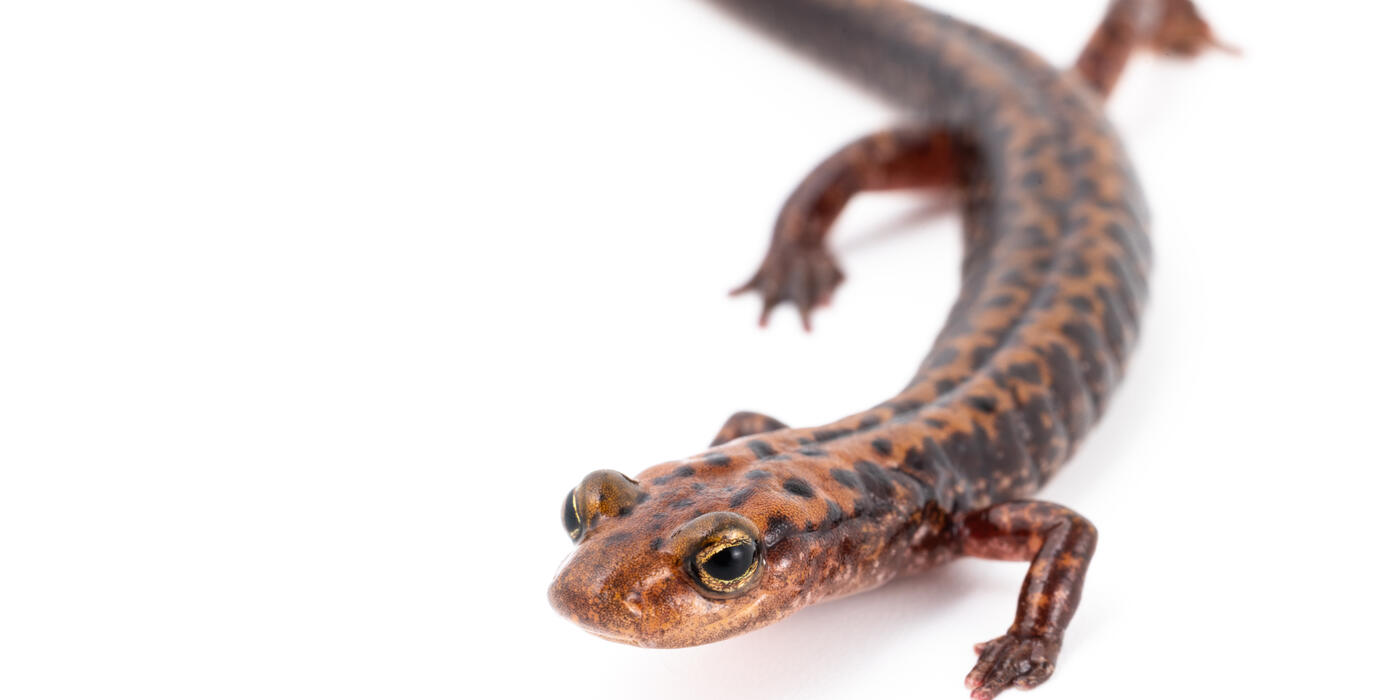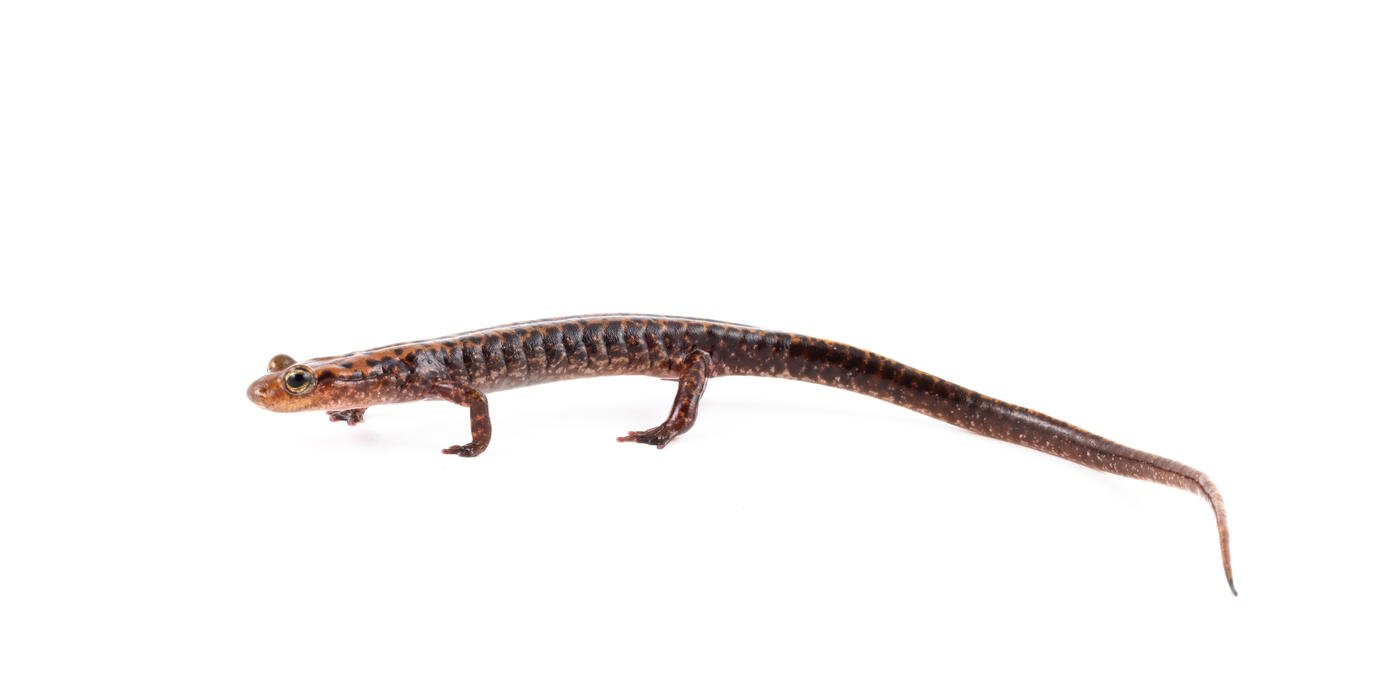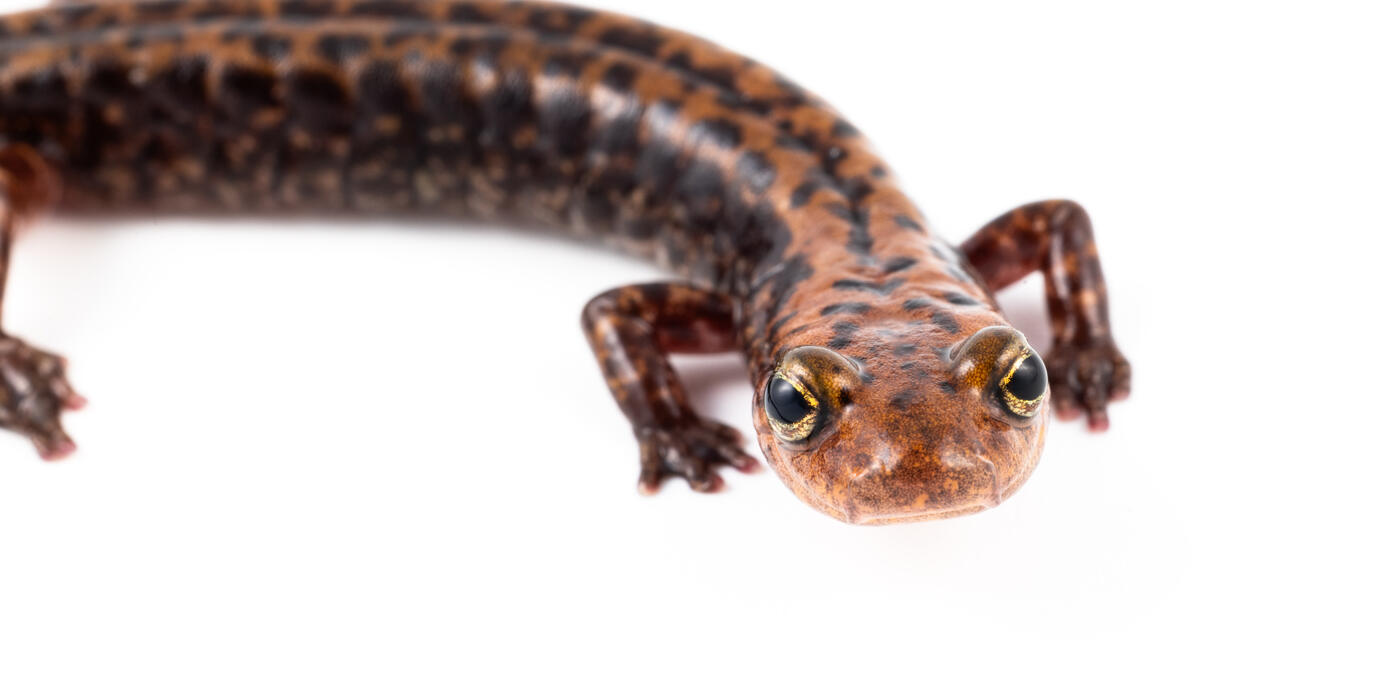Physical Description
Long-tailed salamanders are often yellow, but can range in color to red, orange and brown and have irregular dots and dashes along their bodies and tails. They have large eyes, slender bodies and stout limbs.
Size
Long-tailed salamanders range in length from 4 to 8 inches (10 to 20 centimeters) long, with 60 percent of that length being their tails.
Native Habitat
Long-tailed salamanders range from southern New York, south to northern Alabama and west to Missouri. They can be found in creek beds, caves, streams and ponds. While larvae are aquatic, adults are terrestrial and inhabit the wooded areas surrounding streams and ponds.
Lifespan
Lifespan for the long-tailed salamander is estimated to be about 10 years.
Food/Eating Habits
In the wild, long-tailed salamanders eat a variety of invertebrates.
At the Smithsonian's National Zoo, long-tailed salamanders receive a mixture of crickets, fruit flies, bean beetles, wood lice, springtails and black worms.
Reproduction and Development
Reproduction in long-tailed salamanders is not well documented. They are known to rub heads as part of courtship behavior.
Breeding occurs from late fall through early spring. Females lay 60 to 110 eggs on the undersides of rocks in water and leave after laying. Hatching occurs four to six weeks later.
Conservation Efforts
The primary threats to long-tailed salamanders include habitat destruction and the presence of emerging diseases. Salamanders, like other amphibians, can absorb pollutants into their skin and are therefore highly susceptible to environmental contaminants.
Help this Species
Organize or attend a stream, river, lake or other waterway cleanup in your area to preserve aquatic habitats for local species.
Avoid single-use plastics, such as plastic bottles, bags and utensils. Choosing reusable options instead can help reduce plastic pollution.
Save water by switching to low-energy appliances, fixing leaks and turning off faucets when they aren't in use.
Smithsonian's National Zoo and Conservation Biology Institute. (n.d.). Long-tailed salamander. Retrieved January 20, 2026, from https://nationalzoo.si.edu/animals/long-tailed-salamander
Animal News





